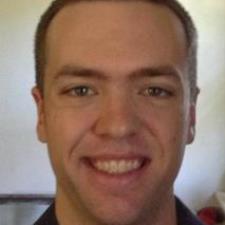
Natalie W. answered • 12/13/16
Tutor
4.8
(139)
Helping students of all ages achieve their "A-ha!" moment since 2008.
Hi Stephanie!
We can approach this problem by first looking at how distance, rate, and time are all related. The speed, or the rate, at which the distance is changing over time is expressed as:
S = D/t, where S is the speed, D is the distance, and t is the time.
If we rearrange this equation, by multiplying both sides by the time, t, we can get an equation that shows how distance is related to speed and time.
D = S*t
The problem asks us to determine how long it takes for Nickola to complete each part of the race. We know how fast he was traveling during each part (3 km/hr for swimming, and 15 km/hr for running), we know the total distance he traveled was 97.59 km, and we know that he completed the race in 10.5 hours. This information allows us to setup the following relationships.
D(swim) + D(run) = 97.59 km
t(swim) + t(run) = 10.5 hours.
By using the speed he traveled for each part, and the time, we can come up with an equation that allows us to express the distance Nickola traveled during each part of the race as a function of speed and time.
D(swim) = S(swim)*t(swim) = 3 km/hr*t(swim)
D(run) = S(run)*t(run) = 15 km/hr*t(run)
Since we know that t(swim) + t(run) = 10.5 hours, we can rearrange this equation to solve for t(run). This way, when we put all of these pieces together in the original equation for the total distance, we have one equation with one unknown variable, versus one equation with two unknown variables.
So, t(run) = 10.5 hours - t(swim).
Let's substitute the right-hand side (RHS) of this equation in for t(run) of our D(run) equation.
D(run) = 15 km/hr*(10.5 hours - t(swim)).
Now, we're going to take the bold equations, and plug RHS of them into our original equation for the total distance that Nickola traveled.
D(swim) + D(run) = 97.59 km
3 km/hr*t(swim) + 15 km/hr*(10.5 hours - t(swim)) = 97.59 km
From here, we're going to distribute the 5 km/hr rate across the binomial, combine like terms, and then algebraically solve for the unknown quantity, t(swim).
*I'm going to temporarily drop the units from the equation while working through the algebra, you should make certain (once you've finished the problem) that all of your unwanted units cancel out, and that you're only left with the units that you are looking for. Since we're looking for time, the unit we expect to have remaining would be hours.*
3*t(swim) + 15*(10.5 - t(swim)) = 97.59
3*t(swim) + 15*10.5 - 15*t(swim) = 97.59
-12*t(swim) + 157.5 = 97.59
-157.5 -157.5
-12*t(swim)/-12 = -59.91/-12
t(swim) = 4.99 hours
This means that it took Nickola 4.99 hours to complete the swimming portion of the race. In order to determine how long it took Nickola to complete the running portion of the race, we need to use the equation for time: t(run) = 10.5 hours - t(swim), and substitute the value that we calculated for t(swim).
t(run) = 10.5 hours - t(swim) = 10.5 hours - 4.99 hours = 5.51 hours.
t(run) = 5.51 hours
Once we have these values, it's a good idea to check to see if we need to round our answers to the correct number of significant digits.
Total time = 10.5 hours, so t(swim) = 4.99 hours = 5.0 hours and t(run) = 5.51 hours, or 5.5 hours.
So, the solutions for the problem are: t(swim) = 5.0 hours and t(run) = 5.5 hours.
---
I hope this explanation helps!





